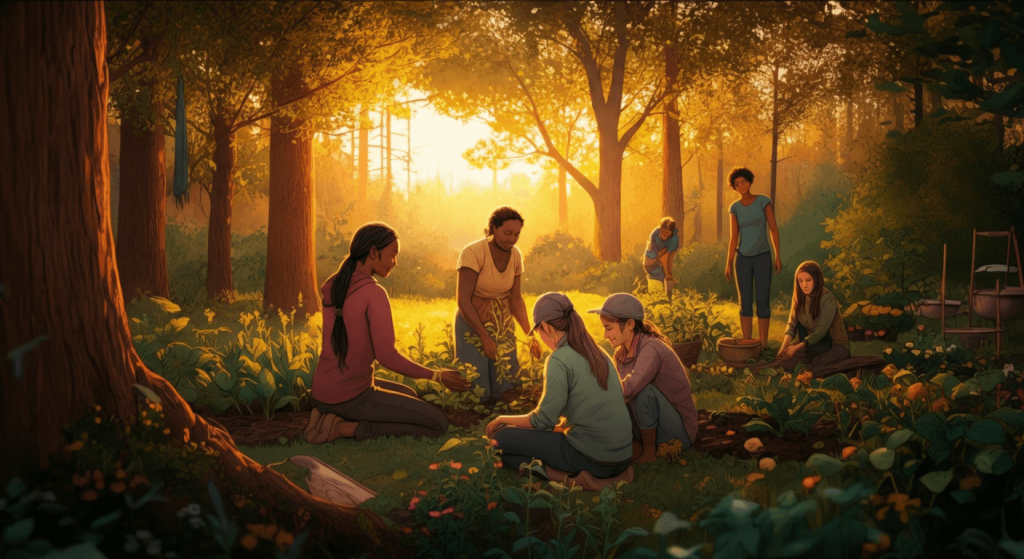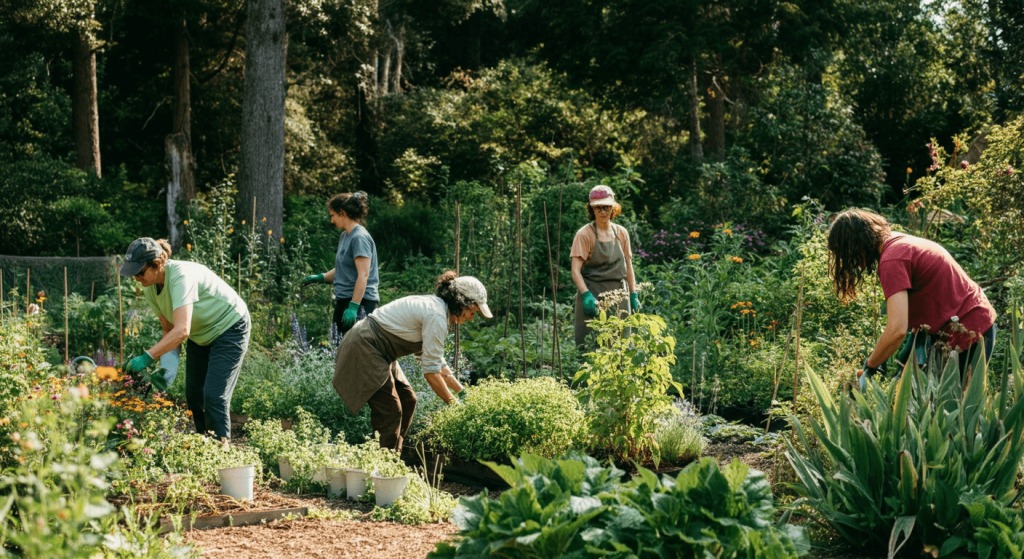Nature is an intricate dance of relationships formed by all living organisms living and interacting together in various systems. Communities in nature are made up of different organisms that thrive together in shared spaces, forming ecosystems. By understanding the different types of communities in nature, we can gain insight into the delicate balance that sustains life on Earth.
From forests teeming with biodiversity to the harsh isolation of deserts, the types of communities in nature stretch across the vast landscapes of our planet. This post will take you through the main categories of communities you’ll find in nature, with examples showing how unique and dynamic these systems can be.
What Is a Community in Nature?
To start with, a “community” in nature refers to a group of populations of different species living and interacting within the same environment. These populations include animals, plants, fungi, and microorganisms. Oftentimes, their interactions determine how energy flows within ecosystems, and their relationships influence the health of their environment.
Communities can range from tiny to vast, and they can be as simple as a grassland or as complex as a rainforest. What defines a natural community is the shared physical space and ecological interdependence among its members.
Categories of Natural Communities

Natural communities are typically classified based on where they exist, the types of organisms within them, and the environmental factors that shape life in those locations. Below, we cover some of the most prominent examples.
Forest Communities
Forests are one of the most biodiverse ecosystems on Earth. Found across tropical, temperate, and boreal regions, forest communities host a variety of trees, shrubs, animals, fungi, and bacteria.
1. Tropical Forest Communities
These forests are found near the equator and are characterized by warm temperatures and abundant rainfall. Tropical forest communities, such as the Amazon Rainforest, are home to enormous species diversity, including jaguars, toucans, and towering mahogany trees. Plants in these ecosystems take on unique roles like forming dense canopies that regulate the local environment.
2. Temperate Forest Communities
Unlike their tropical counterparts, temperate forests experience defined seasons, including cold winters and warm summers. Common examples include forests in North America and Europe, where species like oaks, maples, and deer coexist. Deciduous trees dominate these ecosystems, shedding their leaves in autumn to conserve water during colder months.
3. Boreal Forest Communities
Also known as taigas, these forests are found in northern regions and are dominated by coniferous trees like pines and spruces. Animals such as wolves, elk, and bears wander these forests, enduring long winters. Boreal forests also play a vital role in regulating the planet’s carbon stores.
Grassland Communities

Grasslands are defined by their open spaces and dominance of grasses over large trees or shrubs. These are often home to grazing herbivores and predators, as well as burrowing animals.
1. Savanna Communities
Found mostly in Africa, savannas are seasonal ecosystems marked by periods of heavy rainfall followed by dry spells. These communities thrive on the coexistence of grasses and widely spaced trees. Iconic species like elephants, zebras, and lions contribute to the balance of these ecosystems.
2. Temperate Grasslands
Known for their fertile soils, temperate grassland communities in areas such as the Great Plains of North America support biodiversity that includes bison, prairie dogs, and wildflowers. These regions are pivotal in agricultural production globally.
Desert Communities
Desert ecosystems are some of the most challenging environments for life due to their scarcity of water and extreme temperatures. However, desert communities have evolved remarkable survival adaptations.
1. Hot Desert Communities
Hot deserts, like the Sahara, have sparse vegetation dominated by cacti, agave plants, and hardy shrubs. Fauna such as camels, lizards, and snakes adapt to survive with minimal water while regulating their body temperatures.
2. Cold Desert Communities
Contrary to their hot counterparts, cold deserts like the Gobi Desert are marked by cold winters and snowfall. Vegetation is sparse, and wildlife like snow leopards and gerbils have devised unique ways to withstand the chilly conditions.
Aquatic Communities
Aquatic environments offer their own categories of communities, thriving underwater or in semi-aquatic spaces.
1. Freshwater Communities
Lakes, rivers, ponds, and wetlands host freshwater communities. Species like frogs, turtles, and freshwater fish often dominate these systems alongside water plants such as reeds and water lilies.
2. Marine Communities
Oceans are the largest ecosystems in the world, hosting marine communities consisting of plankton, fish, and mammals like whales and dolphins. Coral reefs are a unique sub-community within marine systems, often called the “rainforests of the sea” due to their intricate biodiversity.
Polar Communities
Polar regions like the Arctic and Antarctica house communities adapted to extreme cold. These systems are home to many fascinating organisms, including polar bears, penguins, seals, and krill. Despite harsh conditions, polar communities play a crucial role in regulating global temperatures and ocean circulation.
Urban Communities
Urban ecosystems have emerged as unique environments where human infrastructure mixes with natural elements. Parks, green roofs, and urban forests host communities consisting of pigeons, insects, rats, and plants thriving amidst the concrete jungle. These communities are vital in fostering urban biodiversity.
Why Are Natural Communities Important?
Communities in nature anchor ecosystems, supporting life by fulfilling major ecological roles such as:
- Maintaining biodiversity, which ensures stability and resilience.
- Regulating air and water quality.
- Supporting nutrient cycles essential for ecosystems.
- Providing food, medicine, and resources for human populations.
How to Help Preserve Natural Communities
Preserving natural communities involves efforts at both individual and collective levels. Here are a few actions you can take:
- Support Conservation Efforts: Donate to or volunteer with organizations protecting vulnerable ecosystems.
- Practice Sustainable Living: Reduce waste, limit water usage, and choose eco-friendly products where possible.
- Stay Educated: The more you understand about natural communities, the better you can advocate for their importance.
- Encourage Reforestation: Participate in or fund tree-planting efforts to restore forest ecosystems.
Take a Closer Look at the World Around You
Exploring the different communities in nature reveals a world of incredible interconnectedness. Every ecosystem, from the towering forests to the smallest ponds, demonstrates the profound interdependence among species. They remind us how every life form has a role in shaping our planet’s future.
Curious to learn more about ecosystems and how they function? Stay tuned to our blog for deeper dives into the wonders of the natural world!





